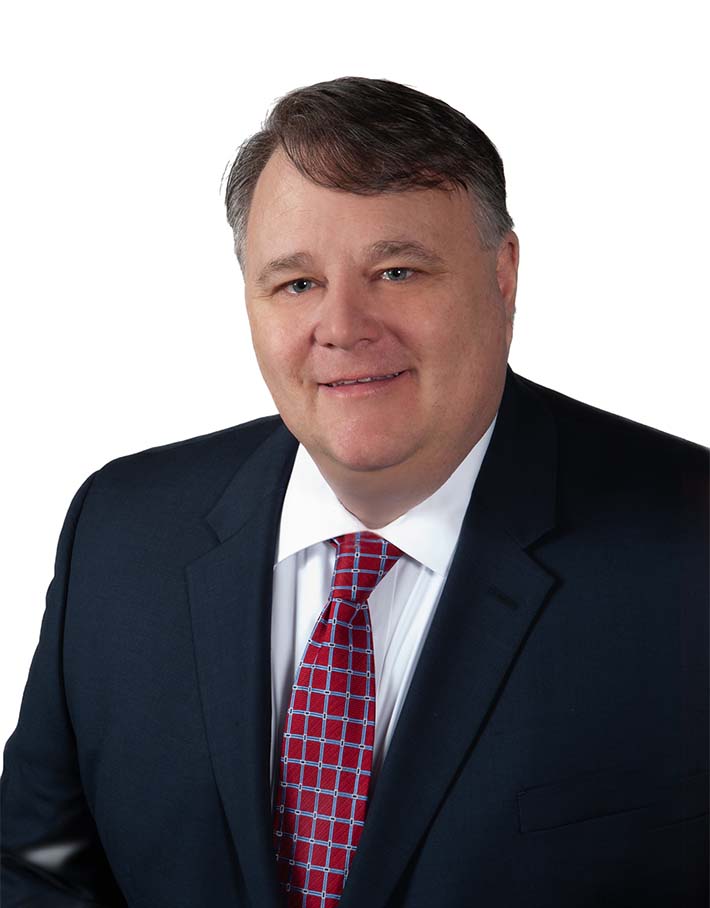Want to Reduce Expenses in Your Budget? The Answer May Be Simpler Than You Think
By Jay Donlin, Pete McAteer and Jeff Wilk
Subscribe to our original industry insights
We often look at how firms are reacting to and managing the rapid changes in the financial services industry. Reviewing the profitability of your firm is one process that can help you get and stay ahead of your competitors. In today’s podcast, Oyster Consulting’s experts discuss things to consider when optimizing your P&L, including best practices, risks around making changes and how you can mitigate them.
Transcript
Transcript provided by TEMI
Libby Hall: Hi, and welcome to the Oyster Stew podcast. I’m Libby Hall, Director of Communications for Oyster Consulting. We often look at how firms are reacting to and managing the rapid changes in the financial services industry. Reviewing the profitability of your firm is one process that can help you get and stay ahead of your competitors. In today’s podcast, Oyster Consulting’s experts discuss things to consider when optimizing your P&L, including best practices, risks around making those changes and how you can mitigate them. Let’s get started.
Jim Roth:
Hello everyone. And thank you for spending a few minutes with us today. I’m Jim Roth and part of the Strategic Planning and Execution team at Oyster Consulting and happy to be joined by my three partners, Jay Donlin, Pete McAteer, and Jeff Wilke. You can learn more about Jeff’s, Pete’s, and Jay’s experiences by reviewing our website @oysterllc.com. Often we take a step back to reflect on what’s most influencing the financial services industry. Clearly the pace of these industry changes can be alarming. And in our view, these changes will only accelerate, but once you review your systems, your processes, your talent pool, and your strategic relationships, how often do you review the profitability of your firm and how you manage your expenses? So, gentlemen, let’s dig in starting with Jeff Wilk. Jeff, what are the key areas that every firm should consider when looking to optimize the P&L?
Jeff Wilk: Jim, thanks. That’s a great question. And it’s a pretty simple place to start. If you basically take a look at it from a perspective of taking a pause – take a pause, take a look, do an inventory, if you will, and perhaps start with your vendor list. Take an inventory of the different vendors that you utilize, across the organization. And there may be some surprises there. On average, when you look at a firm’s tech stack, as one example, there are traditionally 16 or more individual vendors lined up in that tech stack. Each one of them with different uses and different levels of functionality, but all of them contributing to the expense part of your ledger. So it’s important to take a look, see what’s involved. See what is being utilized today. Do you still need it? Did you collect some things over time? But then start a deep analysis, a deep review of each of those vendors in your inventory and see if they’re really needed going forward, or if there’s some ways to consolidate.
Jay Donlin: Yeah. Jeff, let me jump in here. This is Jay. The one thing that people tend to do, what we’ve seen in organizations, is they continue to grow a firm and they don’t continue to go back and look at processes. Look at how they’re structured strategically to meet their goals and objectives. So you continue to bolt on processes. You can continue to bolt on staff, different vendors, that sort of thing. And over time, it becomes cumbersome, and it doesn’t really have a rationalization that occurs. So it’s something that also, you need to kind of address as well, not only looking at tech, but also your processes internally.
Jim Roth: Pete, any thoughts?
Pete McAteer: I think just compliment what both Jay and Jeff said. There are plenty of opportunities to look at streamlining, make things more efficient, look for redundancies, but there’s also an opportunity sometimes to look at the organizational structure and take a deeper dive into whether or not some specific expertise or talent or functions within the organization could be outsourced. And we see this a lot with smaller firms. It really benefits them to outsource certain functionality, certain functions that may warrant a much higher paying salary that a firm of a small stature, small size may not need all that horsepower on their bench. So, just something to think about. There’s an opportunity there to look at optimization. Is it the most efficient and is all of this, all the organizational alignment, is it aligned to your strategy and have you refreshed your strategy is another good question to be asking your leadership team to ensure that the decisions that are being made are coupled with and supportive of the overall firm strategy.
Jim Roth: So Jay, how did this state of expenses get this way?
Jay Donlin: Yeah, Jim, I think we touched on a little bit in the previous section, what happens, and what we have found, is firms have a tendency to kind of chase shiny objects. And what they’ll do is decide – Hey, you know, I need this product, or I need this tech stack, this piece of technology, I need this office space. They try to please everybody, and they don’t really utilize a strategy when making those decisions. So over time, these things accumulate, these contracts accumulate, and it may only be a limited number of people within the organization utilizing various systems or vendors or products. And so you really need to take a look and see- is that really profitable to my firm? Am I getting the bang for the buck on what I’m spending or what I’m offering out?
Do I just need to focus on what I’m good at – What my specialty is versus chasing all these shiny objects? So an inventory of those type of things, it’s almost like cleaning the attic. You want to clean out all the things that you really don’t need anymore. It’s not really benefiting your firm. So you really should take a look periodically. It doesn’t have to be all the time, but periodically. To see if you’ve kind of grabbed some baggage and are dragging it along with you, that you really don’t need.
Jim Roth: Pete, what are some of the cost reduction strategies you’ve noticed with some of your clients?
Pete McAteer: Well, recently with clients, everybody’s looking at the expense line items and the revenue line items for that matter. It’s changing the landscape, it’s changing economics change, and there’s an opportunity to look at both sides of the ledger, optimizing that operating model, aligning with the strategy to achieve that future state, defining what the future state is. Who do you want to be when you grow up? Where do you want to be in five to 10 years? What does that landscape tell you? What are the changes that are happening in the regulatory environment, in the economy, in your practice, how are you aligned to achieving the vast majority of your challenges? They’re the core of your clients’ needs going through product rationalization. Do you have the right products? Are you allowing too many products on the shelf? And is that causing a lot of overhead, and a lot of supervisory risk for that matter? With the advent of some of the things, one of the positives that came out of the pandemic was everybody knows how to use video conferencing.
Now, the idea of virtual relationships with your clients are super easy to do, and almost expected that the client engagement model has changed. And I guess as a positive that came out of the pandemic, everyone is very comfortable with virtual meetings and video conference calls. So that in itself could help reduce a lot of the expenses around managing the practice and managing client engagement. The overhead, as Jay alluded to earlier, things like real estate and business, operational expenses, service vendors, marketing, and advertising, and overall tech support, are just a couple of the line items that you might see in your ledger that you could take a look at. And then again, just taking stock, optimizing, ensuring that you don’t have legacy decisions that you’re still paying for. We’ve seen this with clients when we look their vendor assessment and look at their vendor list and their contracts where they’ve got contracts that people aren’t even leveraging.
They haven’t been used in a while. They’ve gathered dust. So those are the easy, low hanging fruit. But there are some things that are near and dear to certain folks’ hearts. And I think you all know what I’m talking about, when it comes to research providers or certain data feeds that are super important or a specific financial planning module or tool that an advisor has grown accustomed to and has used their entire career. But does it make sense to have an enterprise relationship or a contract for one specific advisor, that’s maybe not being utilized as much as it could be? So those are just some thoughts.
Jim Roth: Jeff, can you share some of the risks associated with cost reductions?
Jeff Wilk: Sure. And I think Jim, when you take a look at reductions in general, probably one of the first things you have to think about is what’s the type of disruption you may be causing. If you just go to eliminate something. If it’s a little used item that’s on in your inventory, whether it’s a product like Pete was just referencing, or if it’s a technology vendor that’s little used across the organization, somebody by chance is still utilizing it. So you’ve got to be aware and take a look at what that disruption may be by a truncation, if you will, or a termination of a relationship, whether it be a product or something along those lines. And there may be some surprises there. There may be some very important usage of those individual items for a much larger client. So it’s not necessarily a volume thing, but it’s more of a relationship importance that you need to take a look at.
Pete McAteer: But one very sensitive, but sometimes very necessary item that needs to be looked at is the overall compensation model. We’ve seen many, many benchmarks out there and we’ve seen where there are huge opportunities to streamline and optimize a compensation model for the entirety of their firm. There are several legacy agreements that need to be updated, need to be looked at. The service and support ratios for sales assistants for the advisors and support teams that they warrant based upon their book of business. whether or not their independent or W-2’s. And then just the allocations and overall spending or expense allocations back to an advisor or to a practice probably should be looked at on a fairly regular basis. Those allocations sometimes snowball as well with these expense additions, or they may not be getting adjusted appropriately you add on these other contracts with other vendors. So just something else to think about. Again, super sensitive, but it really is necessary. It does need to be looked at across the firm.
Jim Roth: So Pete, finally, what can be done to mitigate these risks?
Pete McAteer: Well, I think as you go into one of these evaluations, when you really look, getting into the attic to start to clean it out, as Jay alluded to, you really need to get everybody involved. And who are the impacted stakeholders, making sure that they understand what’s going on and that we’re looking at the P&L and it’s a healthy review of how the firm’s being run. And then just laying out the plan and the process to make sure everybody has some opportunity to chime in and be a part of the decisioning process. And when decisions are made to ensure that the stakeholders are well aware of those decisions and have been engaged in that decisioning process. It really does help to make sure that everybody’s voices are heard and overall just change management.
People don’t eat what they don’t grow. And so in order to manage the change from the ideation, when you’ve come up with this thought and doing the impact assessments, and then getting into the implementation and changing. Actually monitoring and reinforcing the changes is super important as well, providing status updates on the impacts. So, if they go through all this pain, you’ve asked a few folks to take it on the chin a little bit, take it for the team, ensure everybody gets an idea of what that impact is. How that has impacted the firm as stakeholders or perhaps shareholders of the firm. Things like we’ve seen in our past where coffee being cut out. From a free coffee in the coffee room to you had to kind of bring your own sort of thing.
Was that really impactful to the bottom line? Probably not. And it probably didn’t help morale much either and made a bunch more grumpy people. And then just overall, make sure that you’re listening, and you’ve got a good overall feedback mechanism. Enlist or solicit suggestions from folks on cost reduction ideas. And that’s always helpful. And then overall, when you really take a look at this and you understand this kind of accumulated snowball effect over time, ensure that going forward once you’ve cleaned house and you’ve got a pretty good grasp on your overall expense line items, you’ve got a good governance model in place for decisioning and approval of any additional contracts going forward. And just ensuring that the right decisions are being made, they’re aligned to your strategy and they’re aligned to your future state operating model.
Jeff Wilk: Pete, let me add on one additional thought I was having, as you were going through those great examples, which is about leveraging your current resources. You had mentioned contracts that you may not have looked at in a long time, or you may have forgotten about completely. When you look at technology itself, there’s a statistic that somewhere between 10 and 15% of the actual technology functions of a particular app gets used. And the rest isn’t used for a whole variety of reasons. The same holds true for a lot of vendor resources. So as an organization is looking to cut back on costs. you should not hesitate to ask questions of your current key vendors, who may have additional resources or functionality, may have ready for you that you’re already paying for that could really help out the organization, but you’re just not aware of it because it hasn’t been in the mainstream
Pete McAteer: Squeezing more value out of your vendor relationships. Yep. That’s a good tagline for that.
Jim Roth: Jeff that’s very helpful. So gentlemen, any concluding thoughts to share on cost reduction strategies, Jay, Jeff and Pete?
Jay Donlin: Yeah. Let me jump in. One thing that people always go to, as soon as you talk about cost reduction, is staffing. And to Pete’s point about morale, while you could look at your organization and see where there might be some staffing that could be eliminated, you could outsource certain things to either your custodian, your clearing firm, or other vendors. It is something that you’re still responsible for maintaining control of your organization. So you want to be thoughtful when you’re doing that review regarding your compliance, your supervision, any kind of control points. Also, your accounting and finance groups. A lot of these are dictated by the regulators, certain things that you need to do. So, these are things that you need to be thoughtful when you’re looking at your organizational structure, your staffing levels, that sort of thing. But it also dovetails into morale, if your organization, your staff have low morale because you’re in a challenging environment. Or as Pete said, you took away the coffee that can lead to less productivity. And so you want to make sure that you have the right resources in place, the right structure in place and a good morale, and it will benefit you in the long run.
Jeff Wilk: Jim, the only thing I would add in there is that cost reduction is not a once and done. So it’s something that your organization should keep an eye towards all the time. I’ve often alluded to it, like keeping the lint roller handy, right? Every once in a while, do a pass through the organization. And it’s not always going to be the really big things that are staring at you in the face, that are going to surprise you, that are costing you money. It might be small things that just kind of land there and they don’t get noticed and they get ignored, but over time they add up. So if you do that kind of take that lint roller through the organization more frequently, you can save some costs along the way before they get out of hand.
Jim Roth: Very helpful. So, we really appreciate your time and consideration during this podcast, Oyster Consulting specializes in improving performance and reviewing your financials, allowing you to focus on your core competencies. To learn more about how we can help your firm, please give us a call at (804) 965-5400 or, once again, visit our website @oysterllc.com. We hope you’re having a great day and thanks for joining us.
Libby Hall: Thanks everyone for listening. If you’d like to learn more about our experts and how Oyster can help your firm, visit our website @oysterllc.com. And if you like what you heard today, follow us on whatever platform you listen to and give us a review. Reviews make it easier for people to find us. Have a great day.





